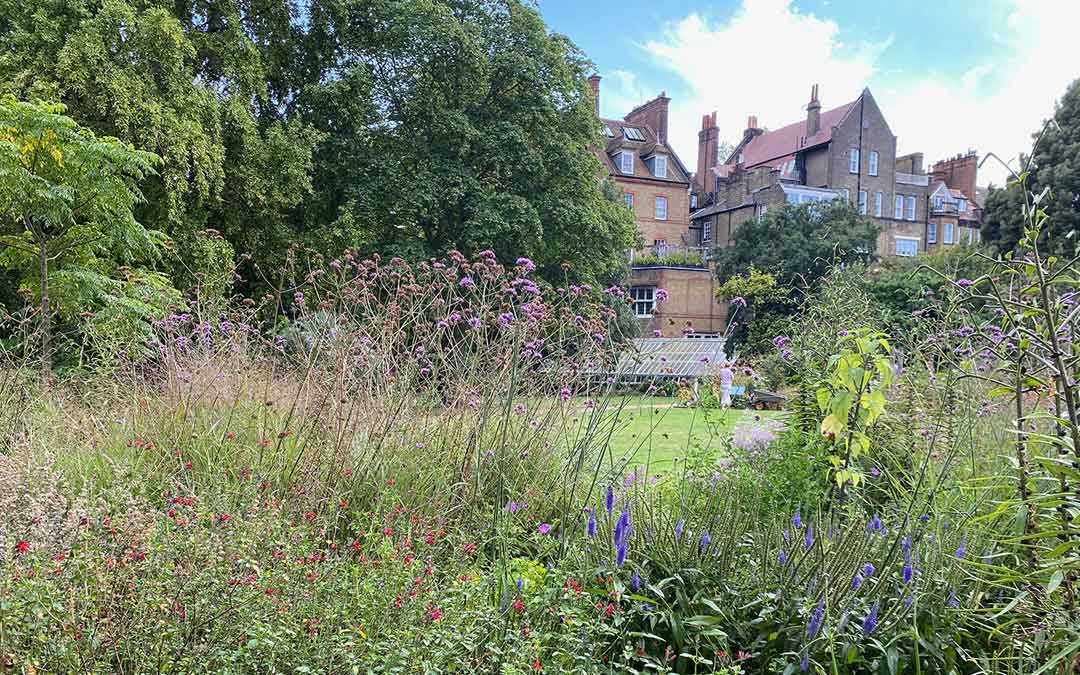Visiting the Chelsea Physic Garden in London

I recently visited the Chelsea Physic Garden in London and have written here about what a wonderful experience it was.
The Chelsea Physic Garden was established 351 years ago in 1673 by the Worshipful Society of Apothecaries of London. It resides by the Thames River in the Chelsea district of London and covers an area of 4 acres, though it is so compact that it seems smaller. The Apothecaries established the garden to grow medicinal plants for their professional use, and storeroom monks used to store useful herbs. Today it grows 4,500 plants including edible, useful and poisonous plants, plants from around the world, threatened plants and woodlands.
In London, herbal stores or apothecaries are common, and there is even a homeopathic hospital, indicating that alternative medicine is alive and well in the UK. Herbal remedies must have Traditional Herbal Registration (THR) before being marketed as a herbal medicine and can only be used for minor complaints that do not require modern medical management. The Chelsea Physic Garden enables the public and professionals to identify the particular plant in a family that has medicinal or culinary properties. These herbs can be identified by the use of the word ‘officinalis’ in their name eg salvia officinalis (sage), valerian officinalis (from which valium is derived) and so on. ‘Officinalis’ (or ‘officinale’) is derived from the latin word ‘officina’.
Herbs and medicinal plants remain important today, as the active ingredient in a quarter of modern medicines is plant-derived. Additionally, the Chelsea Physic Garden views food plants as medicinal in their own right.
Just inside the Garden entrance are the 100-year-old wood-framed heated glasshouses that have recently been renovated with as much of the original wood as possible retained, with sustainable systems for heating and watering incorporated. These contain a vast collection of geraniums/pelargoniums and succulents from around the world that have medicinal uses. Most commonly it is the pelargonium root that is the medicinal part. The collection includes some Australian specimens.
The poisonous garden contains a number of common plants including hemlock-water dropwort, which could easily be mistaken for various fine, ferny-type leaves such as chervil, parsley and tansy, or many other herbs in their seeding stage. All parts are hemlock-water dropwort are deadly and signs abound about not touching plants in this garden. There are also foxgloves, hellebores, aconitum, datura and myrrhis odorata (sweet Cicely). Interestingly, Agatha Christie completed her pharmaceutical training with the Worshipful Apothecaries in 1917, subsequently using her knowledge of poisons in most of her 60 murder mysteries.
The main garden of medicinal herbs contains many plants that you would know and many that you would not suspect as having medicinal values. On a personal note, I was pleased that my herb identification was 100 per cent accurate (I did run a herb nursery for 10 years in Tasmania so it should be – but nevertheless it is reassuring). All labels are botanical with no common names so you do need to know your latin to get the most out of the garden.
The useful plant collection contained much of interest. One has waterproofing qualities that is being tested for water run-off on breathable fabrics used in outdoor gear, others are useful for soil detoxification including common sunflowers for gold harvesting via their leaves and removal of radioactive strontium from soil via their roots. Other species are useful for the production of fabrics, paper, rope, cosmetics, dyes and scientific research.
The edible and tea gardens contained mostly plants familiar to all of us, but of interest to me were a number of plants from different parts of the world that could be grown in Australia but are not. One of the suggestions I saw was that various fruits and vegetables from poorer countries (including Madagascar) be promoted in the UK to provide an export income for those countries. I immediately thought of the food miles that would generate, but compared to the distance to Australia these would be relatively minor. It’s all a balancing act between improving the economies of poorer countries and the impact on climate change.
The final stop was the cacti house containing magnificent specimens from around the world, some with medicinal usages and some highly hallucinogenic.
The Chelsea Physic Garden is beautifully curated and a relaxing oasis in the heart of a city of 11 million people. Should you be lucky enough to visit London, the Chelsea Physic Garden is well worth a visit, but if not, there is plenty to explore online.
Written by Robin Gale-Baker
